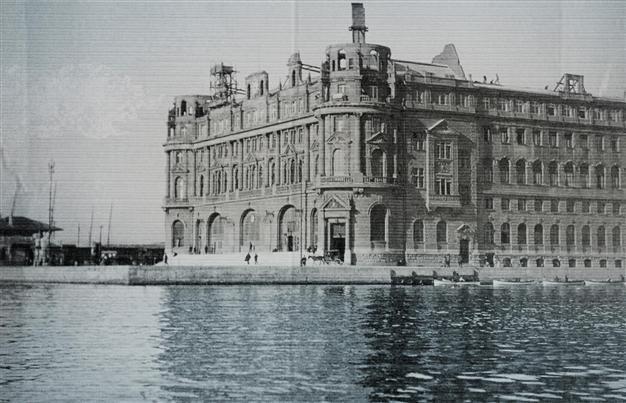A mosaic of Istanbul at the turn of the 20th century
ISTANBUL - Hürriyet Daily News

The photographs in the exhibition feature countless aspects of the most fascinating city in the world, Istanbul, at the beginning of the 20th century.
The Şişmanoglio Megaro of the Consulate General of Greece in
Istanbul opens its doors today to present a photography
exhibition titled “Istanbul through the lens of Achilles Samandji and Eugene Dalleggio.”
The exhibition displays a large collection of photographs taken by two Istanbul Greeks, one, Samandji, a photographer of the sultan’s court, and historian Dalleggio. The photos capture countless aspects of the most fascinating city in the world, Istanbul, at the beginning of the 20th century. Presenting these photographs is simple but at the same time complicated matter. It is simple because the collection pleasantly seduces anyone who peruses it down the enchanting pathways of a world that has great importance for Greeks. It becomes complicated, however, from the moment the viewer tries to decipher the collection, the moment reason is invoked in an attempt to arrive at an interpretation. This is because photographs, through the pictures they present, also reveal the people who took them.
From two different generationsThe two photographers belong to two different generations: Samandji, who took the bulk of the photographs, and the best, in terms of their quality, and his daughter’s husband, Dalleggio, an amateur photographer. Samandji was born in Istanbul in 1870 and left the city in 1936. He served as a photographer to the Sultan and the Ottoman princes. He was, however, a cosmopolitan without a trace of Levantinism. Europeans and those who aspired to European modes of living do not appear before his lens, just as the then-westernizing Pera is almost absent from his photographic collection.
He adored Istanbul: the entire city, the multinational and multi-religious metropolis, the then many-faced city of minorities. He immortalized its buildings and its people, its general views, its countryside, and its Byzantine monuments, but also the political events that shook the city in the early 20th century. Istanbul seduced and guided him. The photographs thus represent the city’s own internal monologue and its reflection. The collection does not contain any of the affectation and pretension of Orientalist artists, who because they viewed things from a distance, remained essentially foreigners to the space they were attempting to describe. Samandji’s eye is spontaneous and internal, directed to an external world that is at the same time a familiar place for the soul. He was always completely genuine, and Istanbul unfolds before his lens exactly as it was.
Eugene Dalleggio, who belonged to the next generation, deliberately tried to save this heritage of memory. He gathered together his father-in-law’s photographic collection and added to it many of his own photographs. He made repeated visits to Istanbul up to the early 1960s, which rekindled his memories and gave them concrete form once more. In this way, he managed to rescue the memory of Samandji as an important artist, but also the memory of Istanbul itself.
The exhibition will continue through June 20.
Photograph,
